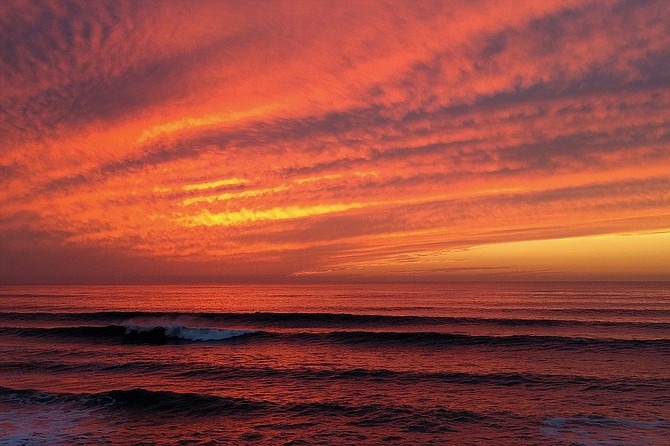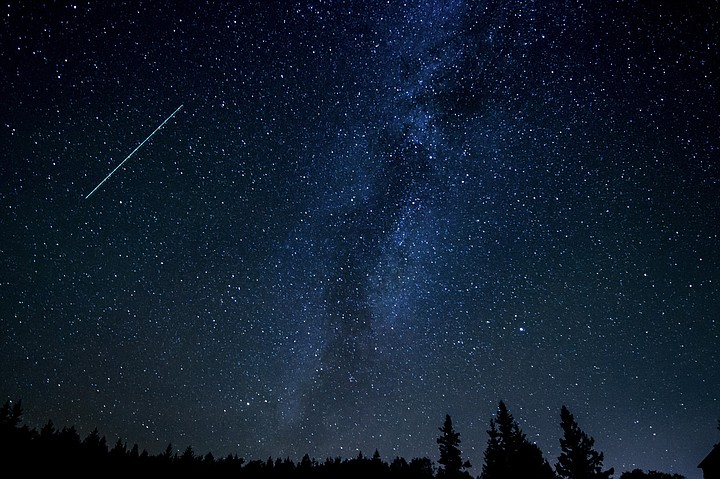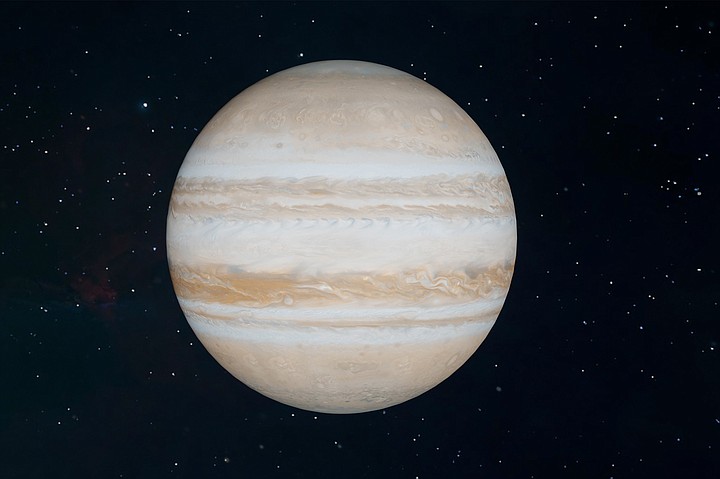 Facebook
Facebook
 X
X
 Instagram
Instagram
 TikTok
TikTok
 Youtube
Youtube

Spectacular Sunsets and Sunrises are characteristic of late fall and early winter’s dry spells. You can drive up to Soledad Park atop Mount Soledad in La Jolla or Mount Helix near La Mesa for an all encompassing view. Or try hiking up to vantage points such as Cowles Mountain in the San Carlos area and Woodson Mountain near Ramona. Don’t forget to bring a flashlight for the trip up or down.

Poinsettias, a favorite of backyard gardeners, are now exhibiting their scarlet, petal-like bracts, just in time for the holidays. The onset of 14-hour-long nights triggers their behavior: in San Diego this condition is met just before the winter solstice, at 1:48 pm on Wednesday, December 21. This event signals the beginning of winter in the Northern Hemisphere and the beginning of summer in the Southern Hemisphere. With only about 10 hours of daylight, San Diego must endure its darkest and gloomiest nights this week and next. During the day, the sun struggles to an altitude of only 34 degrees (as seen from San Diego), and then quickly sinks toward the horizon.

The Geminid Meteor Shower, one of the year’s two most regularly active showers, peaks on the night/morning of December 13-14 (Tuesday night through Wednesday morning). The moon might interfere with meteor observations but during the prime hours, which are 12 midnight through 2 a.m., meteors should still be visible. You must be far from city lights to see the meteors effectively. The first Geminid meteors become visible around 6:30 p.m., and viewing improves through the middle of the night, when 100 or more meteors per hour can be spotted by any observer lying flat and taking in the whole sky. The greatest challenge associated with viewing the Geminid shower is the very low outside temperatures associated with both the time of year and the late hour.

Jupiter, the “king” of the planets, appears high in the southern sky after sunset. Note its creamy yellow-white color and unblinking brightness. Aim a small telescope at Jupiter anytime during the next few weeks to see the cloudbelt-banded planet flanked by its four Galilean satellites, or moons, which were discovered by Galileo in 1609, just over four centuries ago. Can’t see all four moons? That’s possible. All you need to do is wait – one or more of the moons could be in transit across the planet, or hidden behind the it, or hidden in the its immense shadow.


Spectacular Sunsets and Sunrises are characteristic of late fall and early winter’s dry spells. You can drive up to Soledad Park atop Mount Soledad in La Jolla or Mount Helix near La Mesa for an all encompassing view. Or try hiking up to vantage points such as Cowles Mountain in the San Carlos area and Woodson Mountain near Ramona. Don’t forget to bring a flashlight for the trip up or down.

Poinsettias, a favorite of backyard gardeners, are now exhibiting their scarlet, petal-like bracts, just in time for the holidays. The onset of 14-hour-long nights triggers their behavior: in San Diego this condition is met just before the winter solstice, at 1:48 pm on Wednesday, December 21. This event signals the beginning of winter in the Northern Hemisphere and the beginning of summer in the Southern Hemisphere. With only about 10 hours of daylight, San Diego must endure its darkest and gloomiest nights this week and next. During the day, the sun struggles to an altitude of only 34 degrees (as seen from San Diego), and then quickly sinks toward the horizon.

The Geminid Meteor Shower, one of the year’s two most regularly active showers, peaks on the night/morning of December 13-14 (Tuesday night through Wednesday morning). The moon might interfere with meteor observations but during the prime hours, which are 12 midnight through 2 a.m., meteors should still be visible. You must be far from city lights to see the meteors effectively. The first Geminid meteors become visible around 6:30 p.m., and viewing improves through the middle of the night, when 100 or more meteors per hour can be spotted by any observer lying flat and taking in the whole sky. The greatest challenge associated with viewing the Geminid shower is the very low outside temperatures associated with both the time of year and the late hour.

Jupiter, the “king” of the planets, appears high in the southern sky after sunset. Note its creamy yellow-white color and unblinking brightness. Aim a small telescope at Jupiter anytime during the next few weeks to see the cloudbelt-banded planet flanked by its four Galilean satellites, or moons, which were discovered by Galileo in 1609, just over four centuries ago. Can’t see all four moons? That’s possible. All you need to do is wait – one or more of the moons could be in transit across the planet, or hidden behind the it, or hidden in the its immense shadow.
Comments